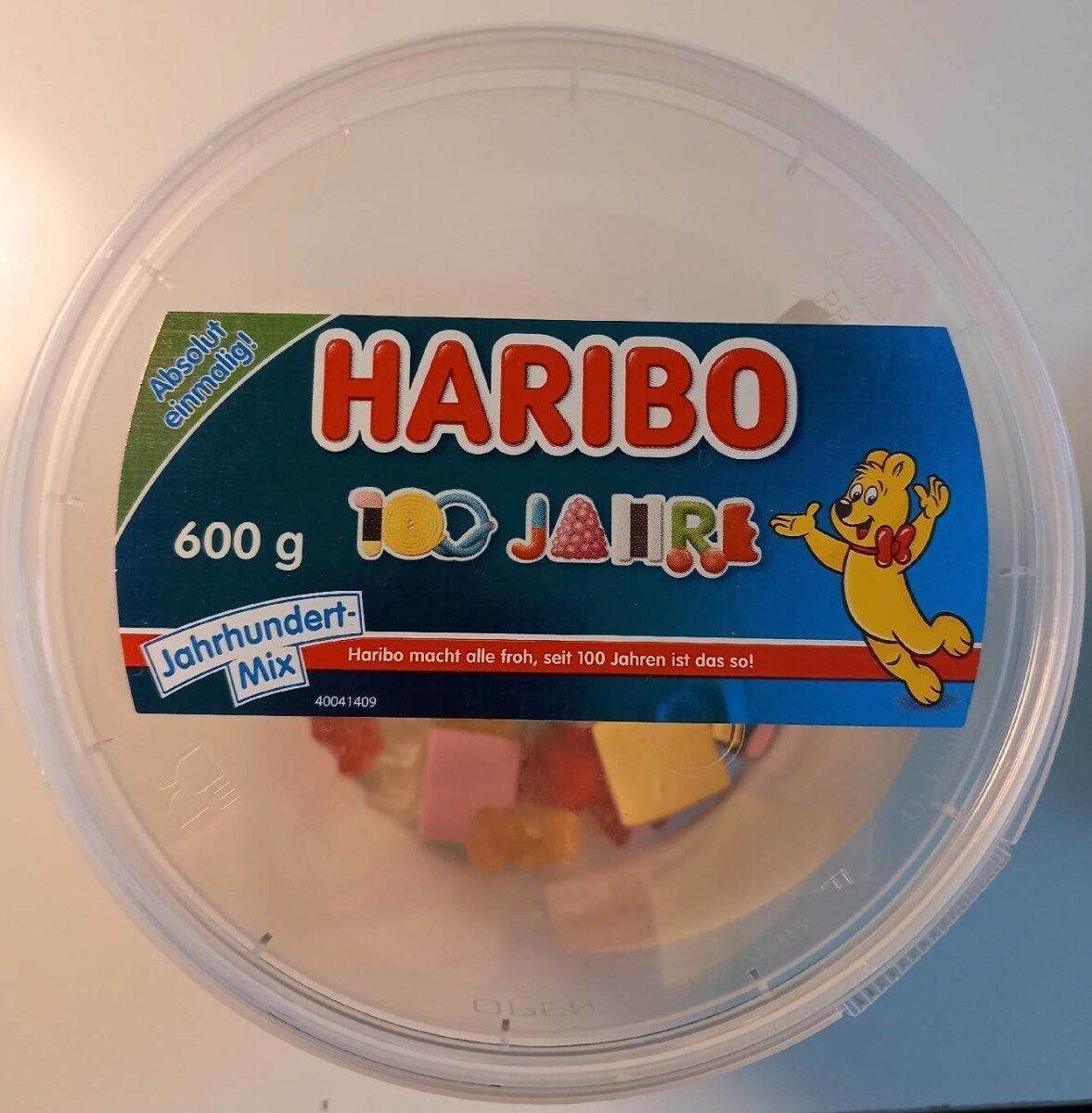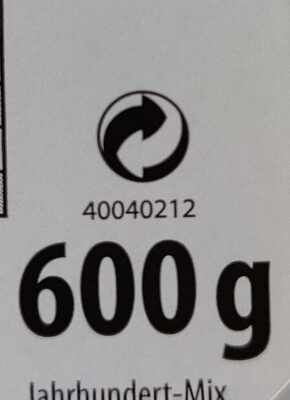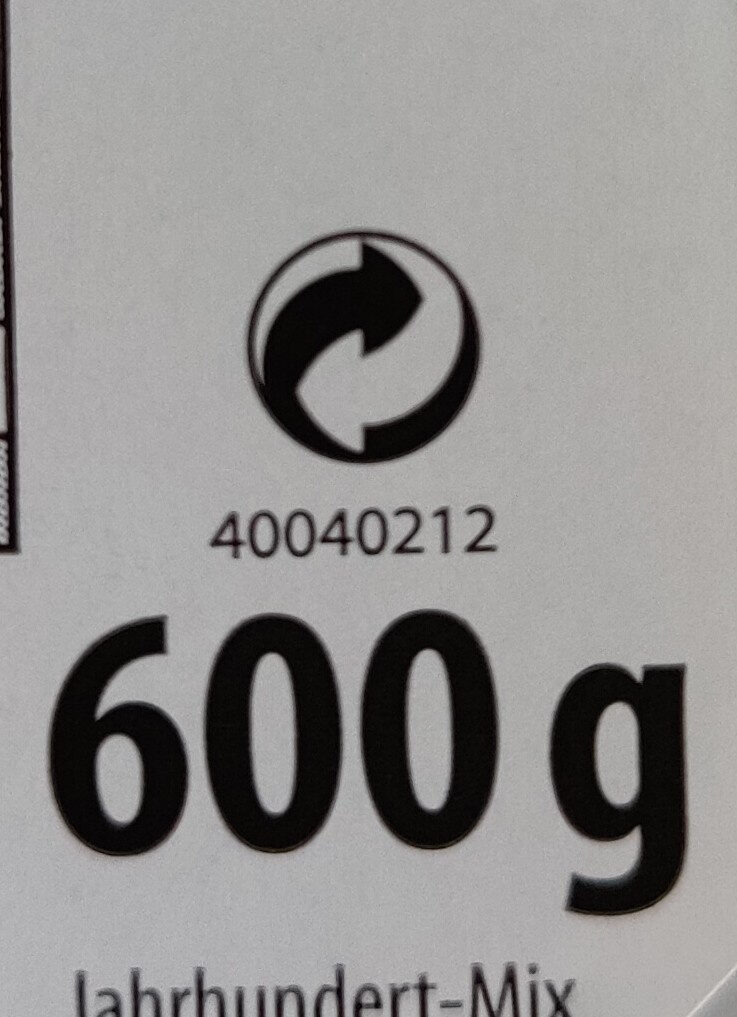100 Jahre Jahrhundert Mix - Haribo - 600 g
This product page is not complete. You can help to complete it by editing it and adding more data from the photos we have, or by taking more photos using the app for Android or iPhone/iPad. Thank you!
×
Barcode: 4001686387849 (EAN / EAN-13)
Quantity: 600 g
Packaging: Plastic
Brands: Haribo
Labels, certifications, awards:
Green Dot, Made in the EU
Origin of ingredients: European Union
Manufacturing or processing places: Bonn
Countries where sold: Germany
Matching with your preferences
Report a problem
Data sources
Product added on by kiliweb
Last edit of product page on by packbot.
Product page also edited by charlesnepote, dickerben, ecoscore-impact-estimator, openfoodfacts-contributors, sil, yuka.sY2b0xO6T85zoF3NwEKvllxpaujf-xf_Fwb4nnXQltycHrLIPf9uxbjwOKs.
If the data is incomplete or incorrect, you can complete or correct it by editing this page.










